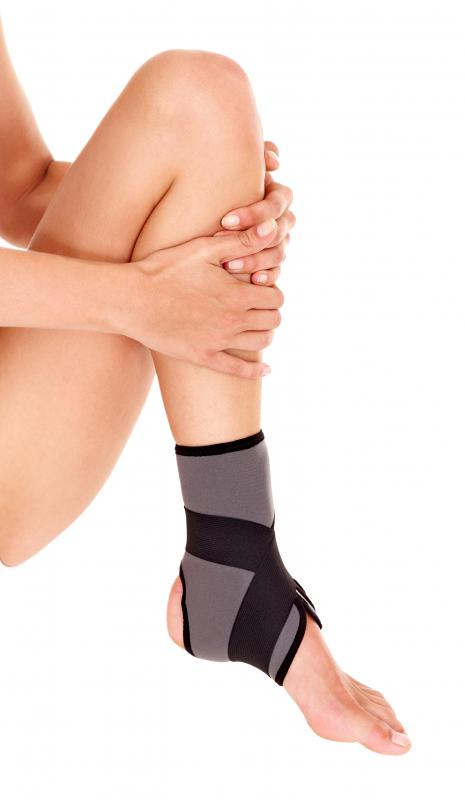At TheHealthBoard, we're committed to delivering accurate, trustworthy information. Our expert-authored content is rigorously fact-checked and sourced from credible authorities. Discover how we uphold the highest standards in providing you with reliable knowledge.
What are the Different Kinds of Polio Leg Braces?
Polio leg braces can assist a patient in strengthening weak joints, helping to keep the feet and legs in the correct positions, and in preventing deformation and development or recurrence of muscle contractions. They are available in a variety of styles and materials to target various muscle groups and meet the needs of the individual patient. The most common types are the ankle-foot orthosis, knee-ankle-foot orthosis, hip-knee-ankle-foot orthosis, and thoracal-lumbar-sacral orthosis braces.
Poliomyelitis, commonly referred to as polio, is an incurable acute viral infection. If the virus enters the central nervous system, it can cause muscle weakness and flaccid paralysis to affected muscle groups. Spinal polio is most common, and often directly affects muscle groups in the feet and legs.

Polio leg braces are constructed by orthotists. Braces are crafted for the patient after studying his or her standing posture, gait, and the paralyzed muscles. Many cases of flaccid paralysis can be reversed by physical therapy, so the braces are designed to keep muscles aligned so that the patient's bone structure can support his or her weight. It is important for the orthotist and the patient to monitor any muscular issues, as brace needs can change over time.

All polio leg braces anchor underneath the patient's heel, but their length depends on the affected muscular groups. Ankle-foot orthosis (AFO) braces attach just below the knee and keep week ankles from rolling. Knee-ankle-foot orthosis (KAFO) braces are full leg braces that fit around the top of the leg to stabilize knee muscles. Hip-knee-ankle-foot orthosis (HKAFO) braces add an additional corrective belt around the hips to force correct alignment of the legs. Thoracal-lumbar-sacral orthosis (TLSO) braces have both a hip belt and a corset fitted around the torso that attach to the leg braces to keep the patient standing upright.

Polio leg braces are constructed from either plastic or a combination of leather and metal. Plastic braces are often favored because they are form-fitting and light-weight. They are, however, easily broken, which often results in sharp edges that can injure a patient. If the patient is still growing, plastic braces will need to be replaced often because of their form-fitting nature. The frequency of replacement drives up the cost of plastic polio leg braces.

Leather and metal leg braces are primarily used for growing children, as well as in under-developed countries where plastics are not widely available or are cost-prohibitive. They do not require as frequent replacement as plastic braces. Repairs and length adjustments for growing children can be made by welders or cobblers, and it is not necessary to have an orthotist or other specialist make these repairs.
AS FEATURED ON:
AS FEATURED ON:
















Discussion Comments
Thank goodness, you rarely see polio braces anymore, since it's been nearly wiped out in the United States, and in most of the developed world.
I know Sister Elizabeth Kenny from Australia pioneered many of the techniques used in modern physical therapy and she did not necessarily advocate using braces for polio patients, unless absolutely necessary.
Of course, very few people outside the White House ever saw President Franklin Roosevelt's leg braces, either. They were mostly hidden by his trouser legs. People knew he had suffered from polio, but few knew how limited his mobility was, and care was taken to keep it that way.
Post your comments